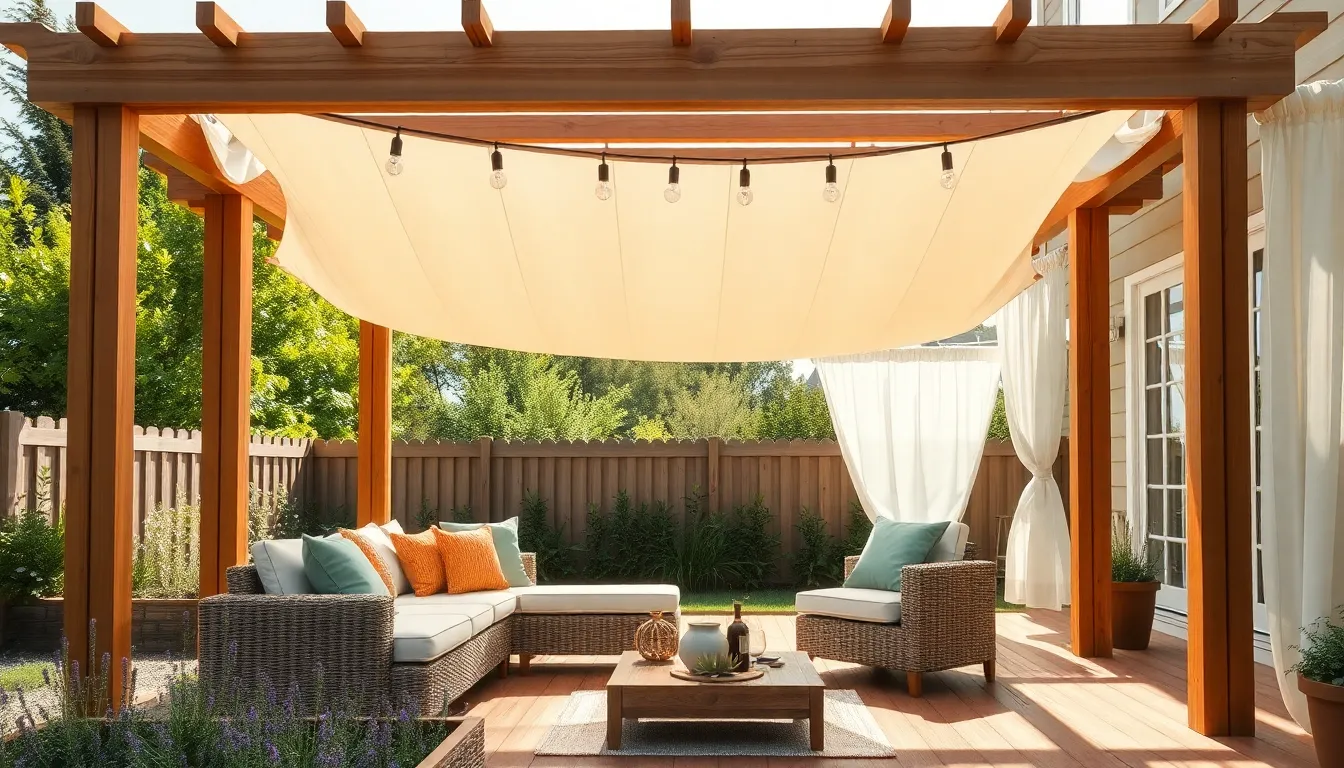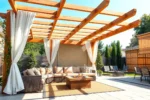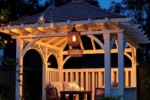Transforming your backyard into a charming retreat is easier than you think, whether you’re just starting out or have tackled plenty of projects before. This DIY pergola guide is packed with inspiring shade ideas that blend style and function, giving you the perfect balance of sun protection and open-air beauty.
Imagine relaxing under your own handcrafted pergola, enjoying cool shade while elevating your outdoor living space’s appeal and comfort. With practical tips and creative designs, you’ll gain the confidence and know-how to build a stunning structure that turns your yard into a favorite gathering spot for years to come.
Select Durable, Weather-Resistant Materials
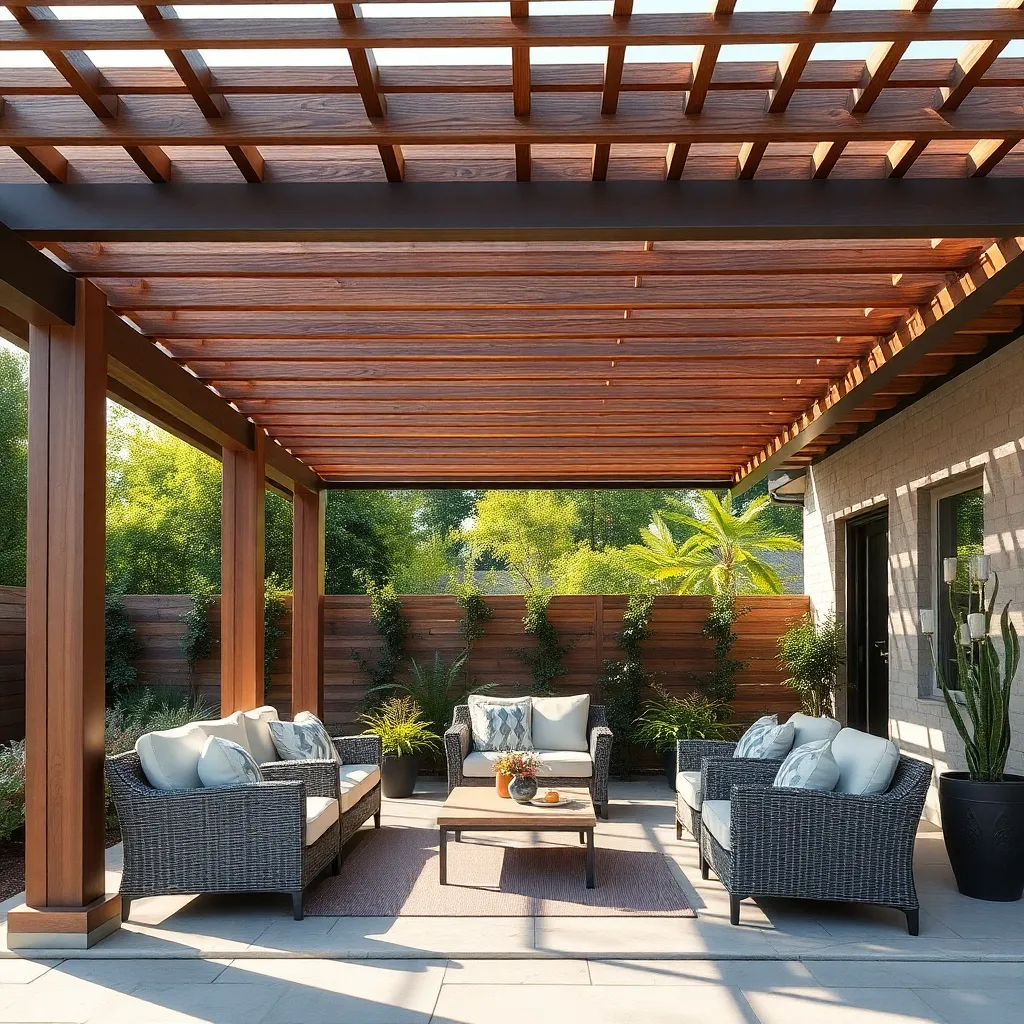
Choosing durable, weather-resistant materials is essential for a pergola that stands the test of time. Opt for naturally rot-resistant woods like cedar or redwood, which require minimal maintenance and blend beautifully with outdoor spaces. For a modern touch, consider powder-coated aluminum or galvanized steel, both of which resist rust and withstand harsh weather without warping or cracking.
To further protect your pergola, apply outdoor sealants or stains that enhance water resistance and UV protection. Pay attention to design details such as using stainless steel fasteners and brackets to prevent corrosion. For advanced durability, incorporate composite materials that mimic wood but offer superior longevity, especially in regions with extreme weather fluctuations.
Incorporate Retractable Shade Covers
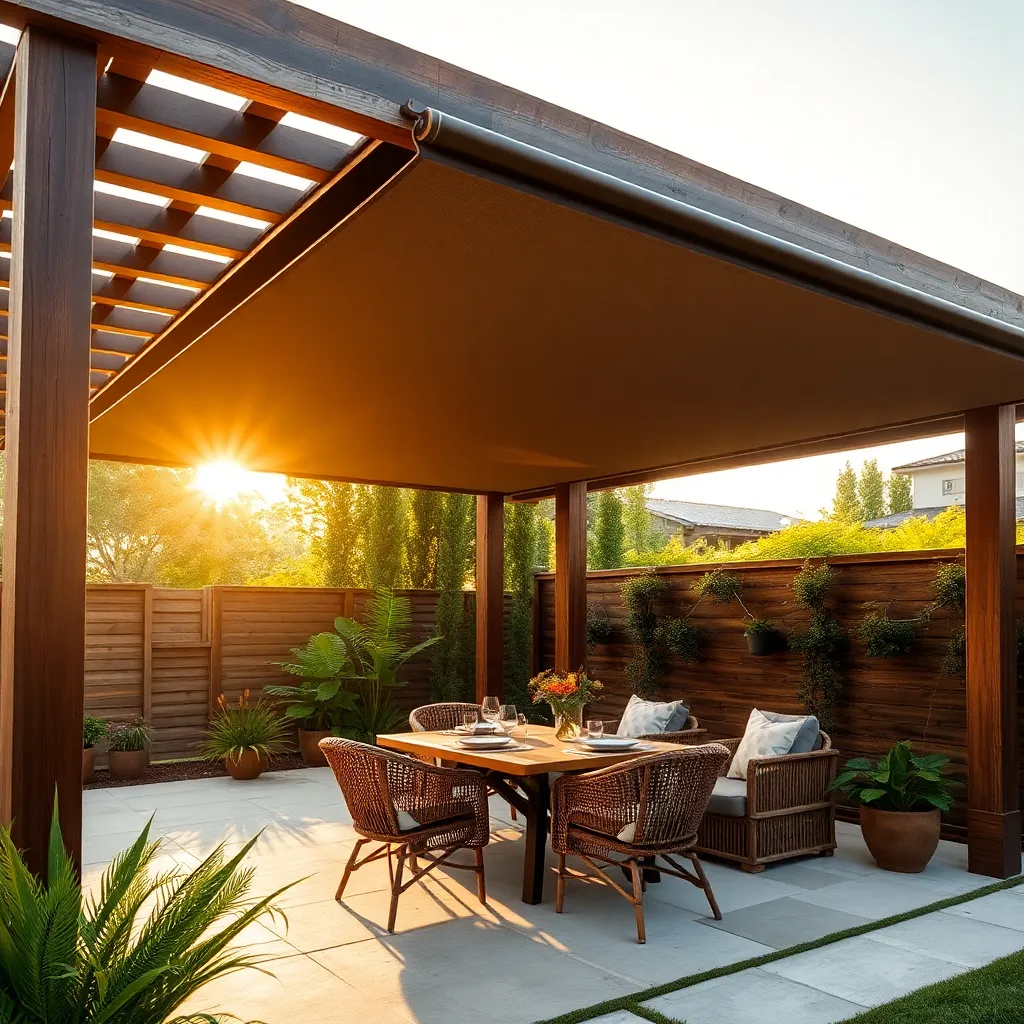
Adding retractable shade covers to your pergola offers versatile sun protection that adapts to changing weather. Choose durable, UV-resistant fabrics like solution-dyed acrylic or polyester, which withstand fading and moisture. Install a smooth, easy-to-operate mechanism—manual or motorized—for hassle-free adjustment, ensuring your pergola remains comfortable year-round.
For optimal functionality, size the retractable cover to extend beyond the pergola’s frame by at least 6-12 inches, providing better shade and rain protection. Consider integrating side tracks or tension cables to keep the fabric taut and secure in windy conditions. This upgrade not only enhances comfort but also adds a sleek, modern look to your outdoor shelter.
Mount Climbing Plants for Natural Shade
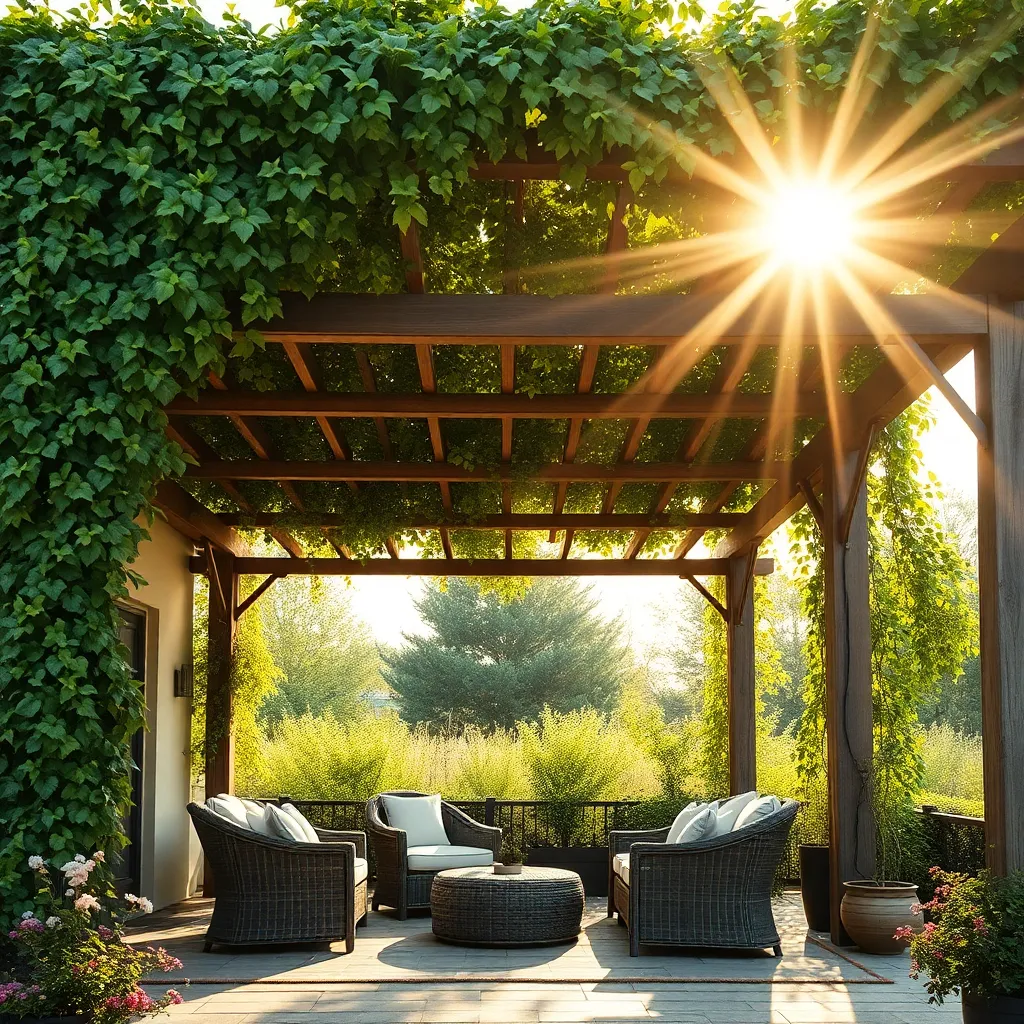
Using
To enhance your design, consider mixing flowering vines with evergreen climbers such as jasmine or honeysuckle for year-round coverage. Regular pruning is key—trim back shoots in late winter to maintain shape and encourage denser foliage, maximizing shade. For advanced gardeners, training vines in a layered pattern on angled rafters can increase both shade density and airflow beneath the pergola.
Use Adjustable Louvered Roof Panels
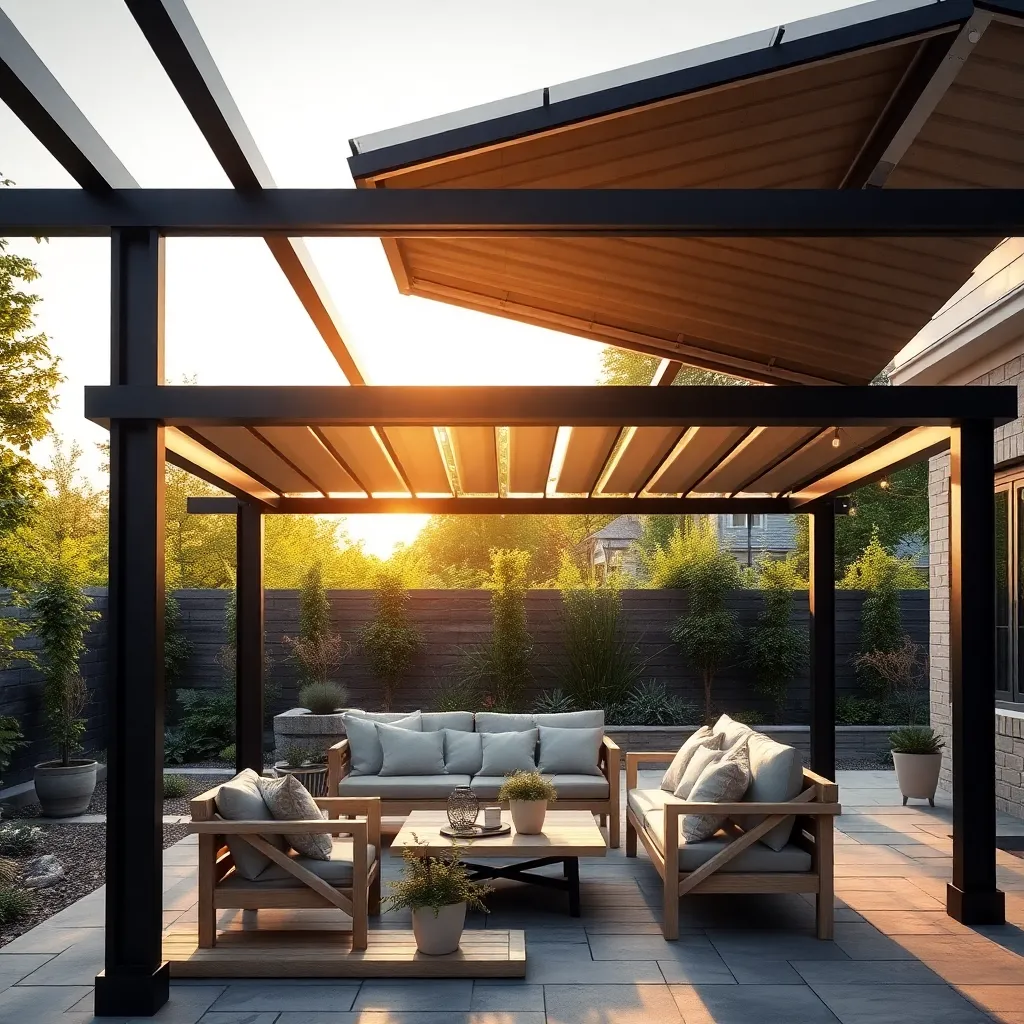
Adjustable louvered roof panels offer a versatile solution for controlling sunlight and ventilation in your pergola. When installing, choose durable materials like aluminum or treated wood, ensuring the louvers can be easily tilted to adjust light and airflow throughout the day. For a standard pergola size, panels measuring around 6 to 8 feet in width work well and can be motorized or manually operated depending on your budget and preference.
To enhance functionality, incorporate a weatherproof motor system for effortless adjustment during changing weather conditions. Additionally, consider sealing edges with rubber gaskets to prevent water leakage when the louvers are closed. This feature not only provides customizable shade but also protects your outdoor space, making your pergola a comfortable retreat year-round.
Add Outdoor Curtains for Privacy
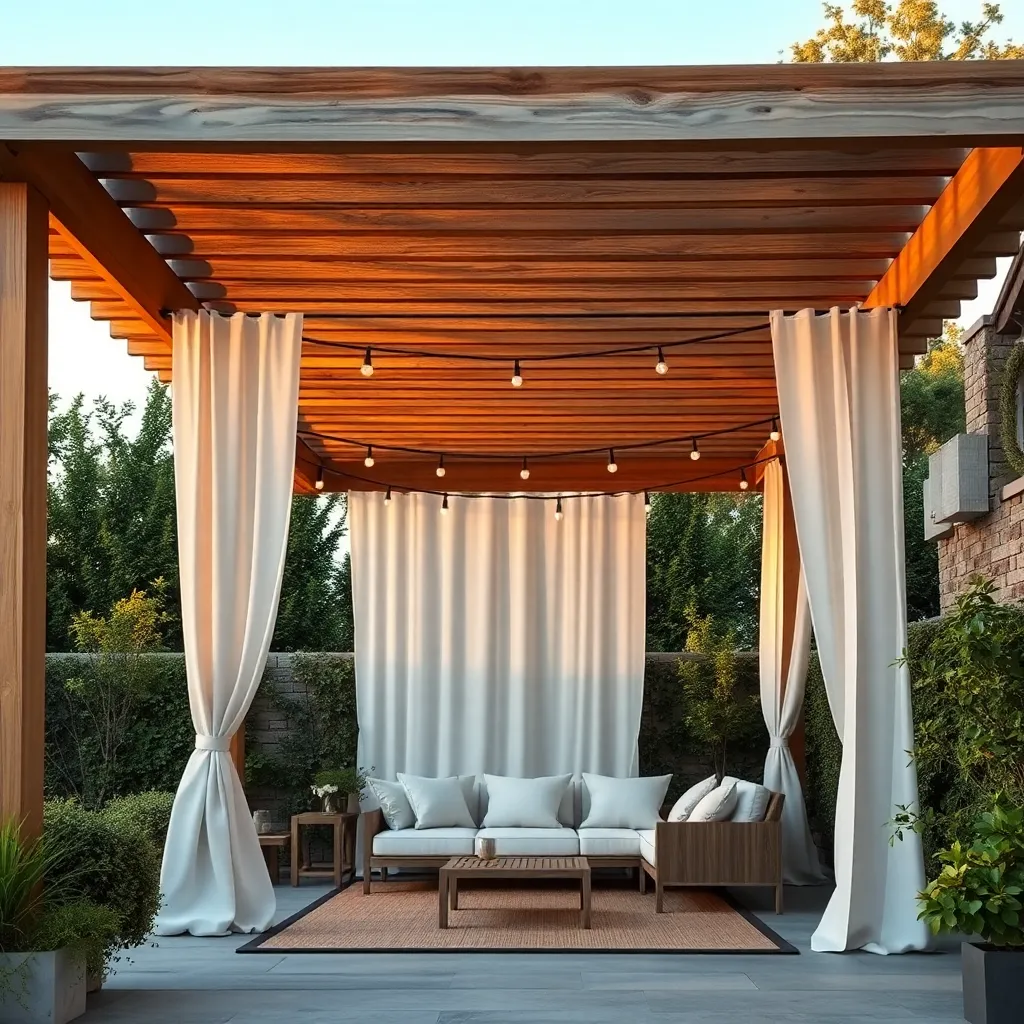
Adding outdoor curtains to your pergola is an excellent way to create privacy while enhancing the space’s style and comfort. Choose weather-resistant fabrics like solution-dyed acrylic or polyester that resist fading and mildew. Install sturdy curtain rods or stainless steel cables around the pergola’s perimeter, ensuring they are tensioned properly to support the curtains without sagging.
For a polished look, measure your pergola’s height and width accurately, allowing curtains to hang just above the ground for full coverage. Consider layering sheer curtains with heavier blackout panels to adjust privacy and light levels easily. To secure curtains during windy conditions, use tiebacks or magnetic weights, making your pergola a cozy, private retreat year-round.
Conclusion: Creating Beautiful Outdoor Spaces
Building a DIY pergola with thoughtful shade ideas not only transforms your outdoor space but also strengthens your connection through shared creativity and teamwork. We explored five key concepts: planning together to align your vision, choosing materials that suit both style and function, incorporating shade solutions for comfort, personalizing the design to reflect your bond, and celebrating the finished project as a symbol of your partnership.
Your next step? Grab a notebook and sketch out your dream pergola with your partner, discussing what shade options feel best for your lifestyle. This simple act sparks collaboration and meaningful conversation. Don’t forget to save or bookmark this article—it’s a valuable guide to revisit as you bring your project and relationship goals to life.
Remember, nurturing your relationship is much like building your pergola: it takes intention, patience, and care. By investing time together now, you’re creating a foundation for lasting joy and connection under your very own shaded sanctuary. You’ve got this—one thoughtful step at a time!

